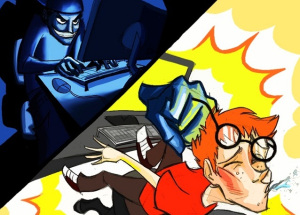
10 Apr Bullying
What seems like harmless teasing usually isn’t just harmless teasing. Bullying is something that has been an ever growing concern in the past 10 years. With the invention of social media forums like Facebook and Twitter, bullies are taking their leave from the school yard and becoming predators to their classmates online. But where has this come from? What is bullying, and what can we as parents and caregivers do to stop it and prevent it from happening again? By answering these questions, as well as a number of others, we can begin to understand bullying and how we can help our kids.
Bullying is when someone hurts or intimidates another person on purpose. The person being hurt and/or intimated also has a hard time defending themselves. There are many ways that young children/adolescents can bully each other, even if they don’t realize that they are hurting the other person at the time. Some forms of bullying include:
- Punching, shoving and other acts that hurt people physically.
- Spreading bad rumours about people (whether it is online or in person).
- Keeping certain people out of a group.
- Teasing people in a mean way (name calling, sarcasm, teasing,).
- Getting certain people to “gang up” on others.
- Threatening and racism.
- Using the internet/text messaging to intimidate, put-down, spread rumours, or make fun of another.
- Sexual interference.
Whether or not the bully knows that they are bullying, any of the above listed behaviours are not acceptable. It is actions like these that can drive children into a depression. It can bring on loneliness, unhappiness, and fear. It can make the child feel unsure and unsafe about going to school. Bullying, in the most extreme forms, has been known to drive some adolescents to suicide. There is absolutely no reason for any child to feel this helpless and alone. There is also no reason for any child to feel that they are unsafe going to school or that they are going to be punished by their peers. As parents and caregivers it can be near impossible to identify if your child is being bullied. However, it is very important to maintain an open line of communication so that your child can feel comfortable coming to you about being bullied.
So what can we do? As mentioned before it is important to keep the lines of communication open with your child so that they can feel comfortable coming to you when they are being bullied. In schools a zero-tolerance for bullying behaviours has been adapted. This has proven successful in the reduction of bullying but there are more things that educators can do. By developing programs for bullying awareness and interventions in bullying situations, schools can better protect and help those students that may fall victim to bullying.


